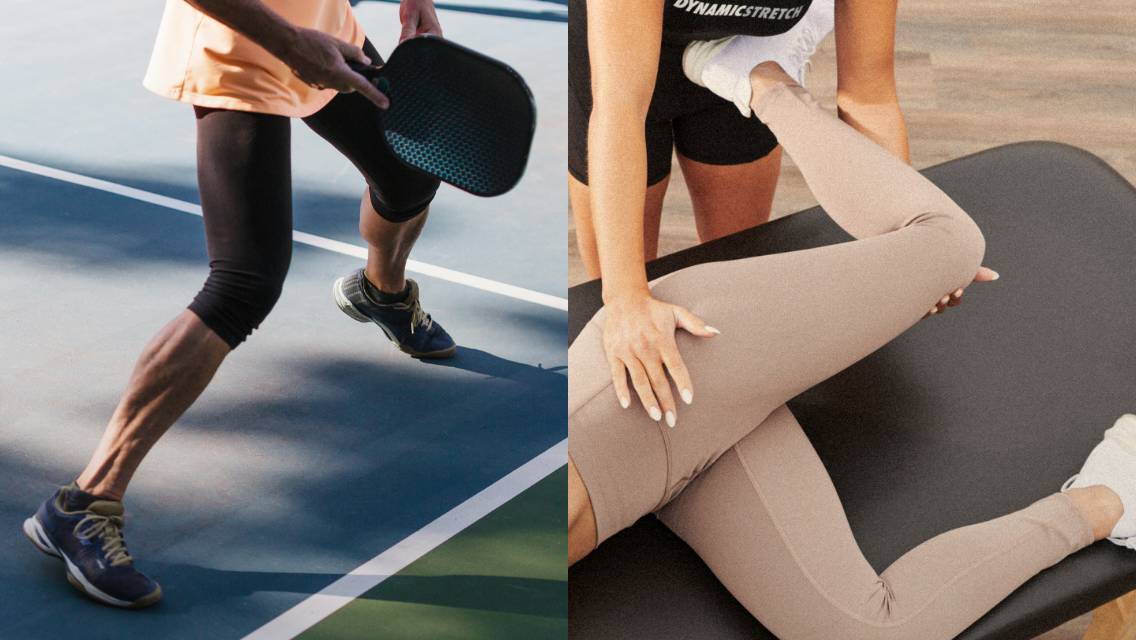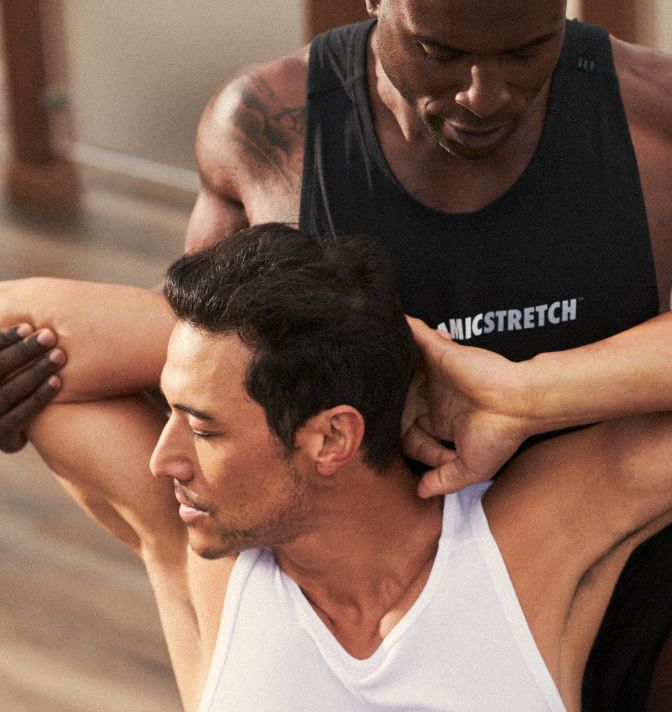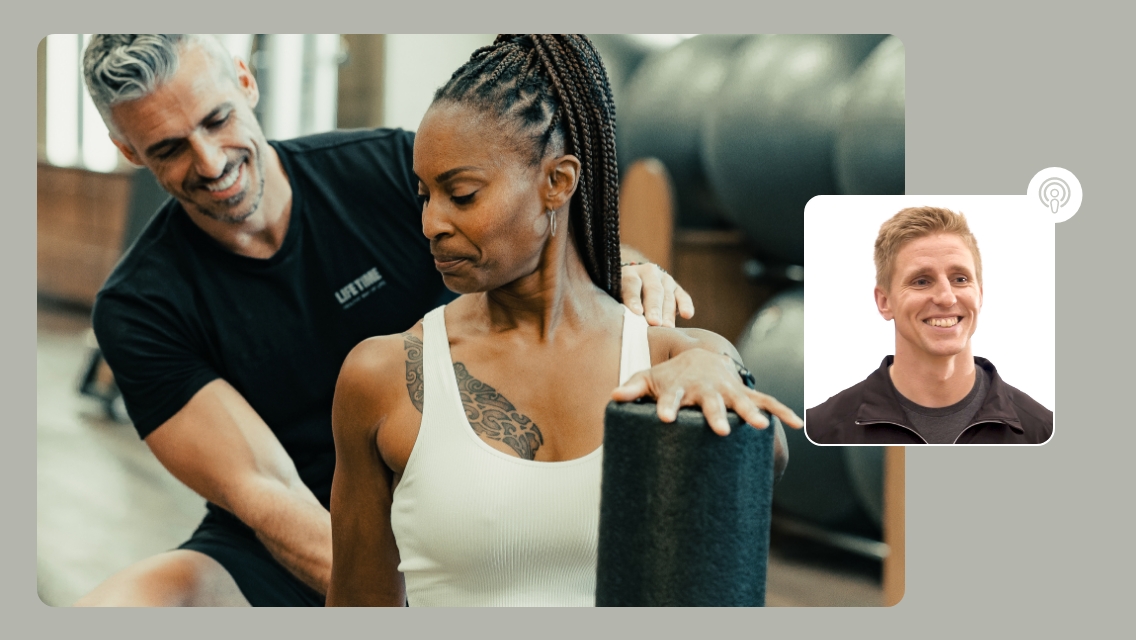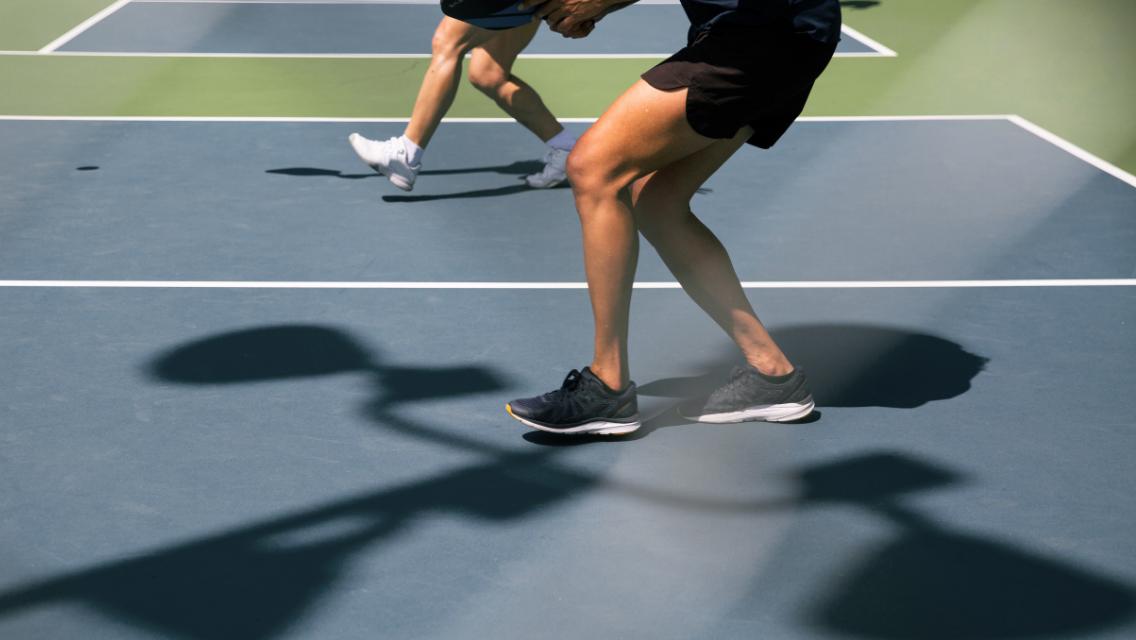Pickleball continues to gain popularity as a low-impact, fun, social sport — but it’s also a serious workout. And as with any physical activity, there is a possibility for strain and injury, especially if you’re not focusing on your flexibility and mobility.
“Ideally, a pickleball player will include a dynamic warm-up in their routine that moves their body in multiple planes of motion and mimics the movements the sport requires,” says Joe Meier, Dynamic Personal Trainer and Dynamic Stretch Specialist for Life Time in Eden Prairie, Minn. “This helps with performance and can decrease the risk of injury during play.
“Many tweaks or injuries happen to pickleball players simply because the lunging, bending, and twisting necessary to hit a low-bouncing ball requires a lot of flexibility,” he explains. “With the explosive growth of pickleball recently and the number of older adults who play, paying attention to this aspect of the game is very important.”
We asked Meier, who’s also the author of the 2023 independently published book Lift for Life, to demonstrate some pickleball-friendly stretches you can add to your warm-up and cool-down routine. “They can be done before or after playing pickleball,” he notes.
1. 90/90 Hip Stretch
“This move helps stretch both your internal and external hip rotators, which is important for any kind of multi-planar movement at the hip that you experience when playing pickleball,” says Meier.
- Start seated with your legs in 90/90 position and your arms behind your body, hands on floor for support.
- Lift your legs to the opposite side until the outside of the outer knee and inside of inner knee are touching or near the floor. Hold for a few seconds.
- For an extra challenge, keep leaning over your outer knee and press your hand into the floor to lift your body so you’re kneeling on the outer knee and the foot of your inner leg is out in front of the outer leg.
- Lower back down, swing your legs to the opposite and repeat.
- Repeat five times on each side.
2. Quadruped T-Spine Rotation
“Pickleball uses a lot of muscles surrounding the spine and rib cage, including your core and upper back or T-spine,” says Meier. “Warming up and stretching this part of the body is ideal for the swinging and overhead movements in pickleball, and forgoing a proper warm-up may contribute to pain or injury — and not necessarily only in the upper back, but in the lower back, shoulders, and arms as well.”
- Start in a tabletop position with your hands planted on the floor about shoulder width apart. Keep one knee rested on the floor directly under the hip, at about a 90-degree angle, and stretch your other leg straight out to the side, foot planted on the floor. (Note: For more of a rotational challenge, keep both knees on the floor.)
- Take the palm of your hand on your straight-leg side and place it on your head over your ear.
- Twist to open your body to that side until your elbow is pointing to the ceiling. Hold for a few seconds.
- Twist back down, this time bringing your elbow under your body to touch your opposite arm. Hold for a few seconds.
- Twist to open your body again and complete all reps before switching to perform on the opposite side.
- Repeat 10 times on each side.
3. Cossack Squat with Reach
“This move stretches your adductors, lower back, and obliques, which are all useful in the lunging, reaching, and bending movements during a pickleball game,” says Meier.
- Start with your feet wide and lean to one side in a lunge position while keeping the opposite leg straight until your adductor feels a stretch.
- Reach your elbow on your straight-leg side toward your opposite foot, then straighten that arm to reach out and away before tracing a large circle over the body and returning to the starting position.
- Perform on the opposite side.
- Repeat six times on each side.
4. Hamstring Stretch with Forward Lean
“Leaning forward for shots during a pickleball game requires flexibility in your hamstrings and back,” says Meier.
- Start by propping your heel up onto a bench, table, or box.
- Tilt your pelvis forward and lean forward just enough to feel a stretch in the hamstring. Hold for 30 seconds.
- Slowly rotate your foot inward and outward to feel different parts of your hamstring stretch. Place the hand on the side of your elevated leg on the inside of your leg and the opposite arm on the outside to gently assist with this rotation.
- Repeat on the other leg.
- Note: When stretching before play, try to move dynamically through the stretch and hold for less than 30 seconds at a time. Holding the stretch for 60 to 120 seconds is more ideal when done after play. This stretch could be done twice per leg, alternating each time.
5. Basic Lat Stretch
“This stretch helps open up your shoulders and lats so you have more overhead mobility while you’re playing pickleball,” says Meier.
- Facing a sturdy object or railing that you can hold onto, start on the floor in a low lunge position, with both knees bent at 90-degree angles, the knee of your back leg on the floor.
- Grip the railing or object in front of you with the hand that’s on the same side as your kneeling leg. Your arm should be stretched out straight in front of you.
- Lower your upper body to bring your chest and head toward your raised knee.
- Twist your upper body slightly inward and then slightly outward.
- Continue to repeat six times per side, moving slowly through the stretch.
Assisted Stretching for Pickleball
For even more flexibility and mobility work to help your pickleball game, Meier recommends booking a Dynamic Stretch session before or after you play. “A stretch specialist can help you explore deeper ranges of motion, assess and improve your flexibility for playing the sport, and help you feel more recovered post-play.
“Before you play,” he continues, “a stretch session may focus on actively moving your joints through high ranges of motion that will help your performance immediately thereafter. A stretch specialist may also use a percussive massage device to warm up your muscles. Stretches pre-activity likely won’t be held longer than 30 to 60 straight seconds.”
It’s also important to recover after a game. “Stretches likely will be held longer than 60 seconds at a time, and the stretch specialist will help you focus on relaxing breathing techniques to support you in cooling down. Post-play stretching can help you feel better and avoid the feeling of being ‘tight’ later in the day or the next day,” Meier explains.





